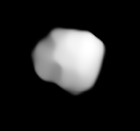File:Potw1749a Amphitrite crop.png
Potw1749a_Amphitrite_crop.png (140 × 131 pixel, dimensione del file: 6 KB, tipo MIME: image/png)
Cronologia del file
Fare clic su un gruppo data/ora per vedere il file come si presentava nel momento indicato.
| Data/Ora | Miniatura | Dimensioni | Utente | Commento | |
|---|---|---|---|---|---|
| attuale | 01:03, 22 mar 2019 |  | 140 × 131 (6 KB) | Kwamikagami | User created page with UploadWizard |
Pagine che usano questo file
La seguente pagina usa questo file:
Utilizzo globale del file
Anche i seguenti wiki usano questo file:
- Usato nelle seguenti pagine di de.wiki.x.io:
- Usato nelle seguenti pagine di en.wiki.x.io:
- Usato nelle seguenti pagine di es.wiki.x.io:
- Usato nelle seguenti pagine di fa.wiki.x.io:
- Usato nelle seguenti pagine di fi.wiki.x.io:
- Usato nelle seguenti pagine di ko.wiki.x.io:
- Usato nelle seguenti pagine di mk.wiki.x.io:
- Usato nelle seguenti pagine di nl.wiki.x.io:
- Usato nelle seguenti pagine di pl.wiki.x.io:
- Usato nelle seguenti pagine di pt.wiki.x.io:
- Usato nelle seguenti pagine di ru.wiki.x.io:
- Usato nelle seguenti pagine di sr.wiki.x.io:
- Usato nelle seguenti pagine di tr.wiki.x.io:
- Usato nelle seguenti pagine di uk.wiki.x.io:
- Usato nelle seguenti pagine di vi.wiki.x.io:
- Usato nelle seguenti pagine di zh.wiki.x.io:


